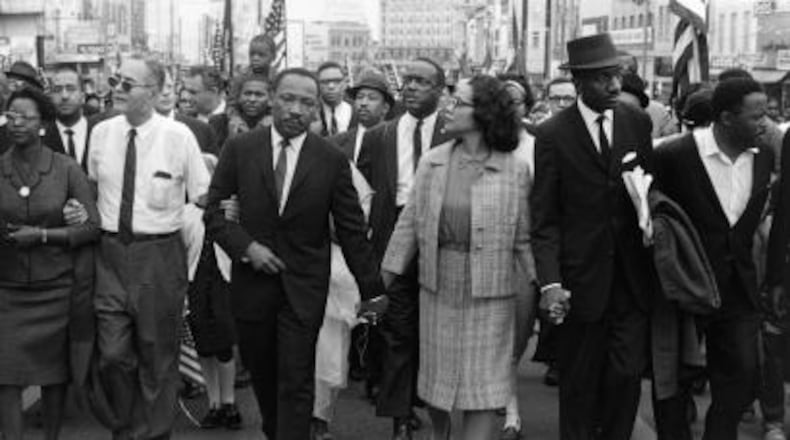Published Feb. 8, 2006
If America were to recount its history in pictures, the powerful 1968 photograph of Coretta Scott King at her husband’s funeral, which first appeared on the cover of Life magazine, would undoubtedly make the cut.
“It’s one of the very classic images of the last century,” said Julian Cox, photography curator of the High Museum of Art, which has a print of the photo in its permanent collection.
Flip Schulke captured the first lady of the civil rights movement cradled in a pew of Ebenezer Baptist Church. Though she wears a mourner’s veil, King’s expression of stoic courage comes through. She embodies a country’s grief, even as she deals with her own.
“You can see the abiding love she had for her husband,” Cox says, “the acceptance of who he was and how he lived, with all the complications. ... [It reflects] her desire to keep moving despite her terrible loss.”
The photo speaks on many levels. It is an icon of the civil rights movement, representing the murder of its great leader and the violence that stalked anyone involved. It also speaks to the central role of the church in the movement -- the preacher-leaders, their bully pulpits. And the way the pew seems to steady the widow represents the church as a source of solace in the face of the personal toll that activism exacted.
As pictures from Coretta Scott King’s funeral Tuesday inundate the world media today, this 37-year-old photo from her husband’s service takes on extra duty as a portrait. It is a tribute to her dignity and grace, her presence, her beauty and her resolve.
Schulke, now 75, knew her character before he entered the church that day. The freelance photojournalist had grown close to the King family while covering the civil rights movement.
“Whenever I was in Atlanta, I’d go to Ebenezer on Sundays, and Martin would invite me home for dinner because he knew I liked fried chicken,” he said, speaking from his Florida home. “I took lots of family pictures. They were used to me. I could take pictures because they didn’t see me.
“Coretta was a gorgeous woman. She had a perfect figure and complexion. And she was very, very bright. She was his helpmate in many ways. She always held her own in our conversations.”
Schulke was the only photographer she invited into her home after the assassination, and one of three who had access to the funeral.
“We were sitting where the deacons regularly sit,” he recalled. “That’s why I got so close.”
He clicked the shutter three or four times. He knew that editors on deadline would pick the photographer with the fewest frames to look at. At first he anticipated a shot similar to his moving photo of a tearful Myrlie Evers at her husband Medgar’s funeral. That was not to be.
“Coretta was a totally different person than Myrlie. She was very self-possessed,” Schulke says.
“She looked proud. Not proud that he died, but proud that he lived.”
LEARN MORE
“Coretta Scott King, Funeral of Martin Luther King Jr., Atlanta”
Flip Schulke’s 1968 photograph is not currently on view in the High Museum of Art, but a digital version is onlne at high.org
About the Author
The Latest
Featured


